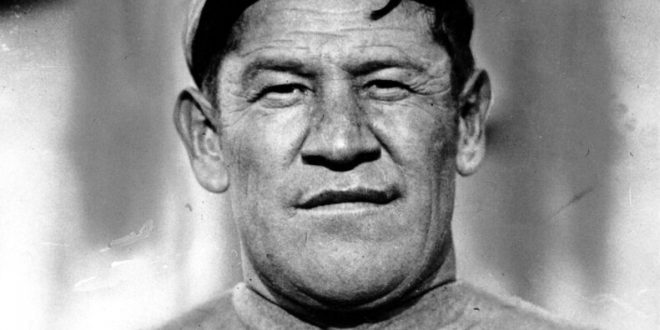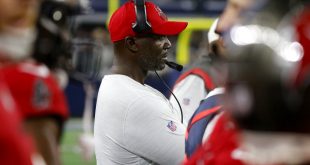The International Olympic Committee reinstated Jim Thorpe as the sole gold medalist from the 1912 Stockholm Olympics in the pentathlon and decathlon on Thursday. The IOC stripped Thorpe, who played minor league baseball from 1909-1910, of his medals in 1913 after he broke existing amateurism rules. The reinstatement comes on the 110th anniversary of Thorpe’s gold medal win in the decathlon.
Jim Thorpe (Wa-Tho-Huk), stripped of his 1912 Olympic Gold Medals because he’d been paid to play minor league baseball, was just reinstated as the sole winner of that year’s pentathlon & decathlon by the International Olympic Committee! pic.twitter.com/8BncA5Fz4c
— Oklahoma Historical Society (@okhistory) July 15, 2022
As a member of the Sac and Fox Nation, Thorpe was the first Native American to win a gold medal.
In 1913, it was discovered that Thorpe received a reported $2 per game to $35 per week while playing baseball. As a result, the Amateur Athletic Union removed his amateur status, and the IOC named Thorpe as a professional athlete.
Despite rules that stated that any protests of results must be made within 30 days of the Games’ conclusions, the IOC decided to strip Thorpe’s medals. The decision came despite the findings coming well after the 30-day limit.
In 1982, the IOC reinstated Thorpe’s gold medals following years of lobbying. However, the committee named him co-champion with Hugo Wieslander in the decathlon and Ferdinand Bie in the pentathlon.
Jim Thorpe: Greatest athlete of all time?
Thorpe first came to prominence at Carlisle Indian Industrial School, where he played football for Pop Warner. In 1912, Thorpe led Carlisle to a national championship while playing running back, defensive back, kicker and punter.
The Jim Thorpe Association established the Jim Thorpe Award in 1986, honoring the best defensive back in college football each season.
Following the IOC’s decision, Thorpe returned to baseball and played part of the 1913 season with the New York Giants. He remained with the Giants for three seasons, playing on-and-off with the team. Thorpe played for the Cincinnati Reds in 1917 before returning to the Giants in 1918. In 1919, the Giants traded Thorpe to the Boston Braves before returning to the minor leagues until 1922.
BASEBALL HISTORY, FEATURING THE YEAR 1913
Jim Thorpe, New York NL, at Polo Grounds, NY #baseball #history @MLB
Source: LOC Bain Collection. pic.twitter.com/6YdKUFLIU1— Bygone Ballgames (@bygoneballgames) July 1, 2022
In 1915, Thorpe signed with the Canton Bulldogs as a player-coach. Thorpe and the Bulldogs were Ohio League champions in 1916, 1917 and 1919.
When the American Professional Football Association’s was formed in 1920 (renamed the NFL in 1922), the charter members named Thorpe the league’s first president, according to Thorpe’s biography on the Pro Football Hall of Fame website, while he continued to play for Canton. Thorpe played with six different teams in the NFL until his retirement at the age of 41 in 1928.
Following his death in 1953, the Pro Football Hall of Fame posthumously inducted Thorpe into its inaugural class in 1963.
Hall of Fame HB Jim Thorpe was born OTD in 1888. Hall of Fame Enshrinement Class of 1963. Considered one of the most versatile athletes of modern sports (Olympic gold medalist, played professional football and baseball). First President of the @NFL. pic.twitter.com/cl8FwzSiKl
— Pro Football Hall of Fame (@ProFootballHOF) May 28, 2018
Ten years later, President Richard Nixon named April 16 as “Jim Thorpe Day” in honor of the athlete.
In 1950, the Associated Press named Thorpe the greatest athlete through the first half of the 20th century. In 1999, the AP named Thorpe third on its list of greatest athletes of the century.
Most recently, the National Native American Hall of Fame named Thorpe, who battled racism during his career, to its inaugural hall of fame class in 2018.
 ESPN 98.1 FM / 850 AM WRUF ESPN 98.1 FM / 850 AM WRUF
ESPN 98.1 FM / 850 AM WRUF ESPN 98.1 FM / 850 AM WRUF




